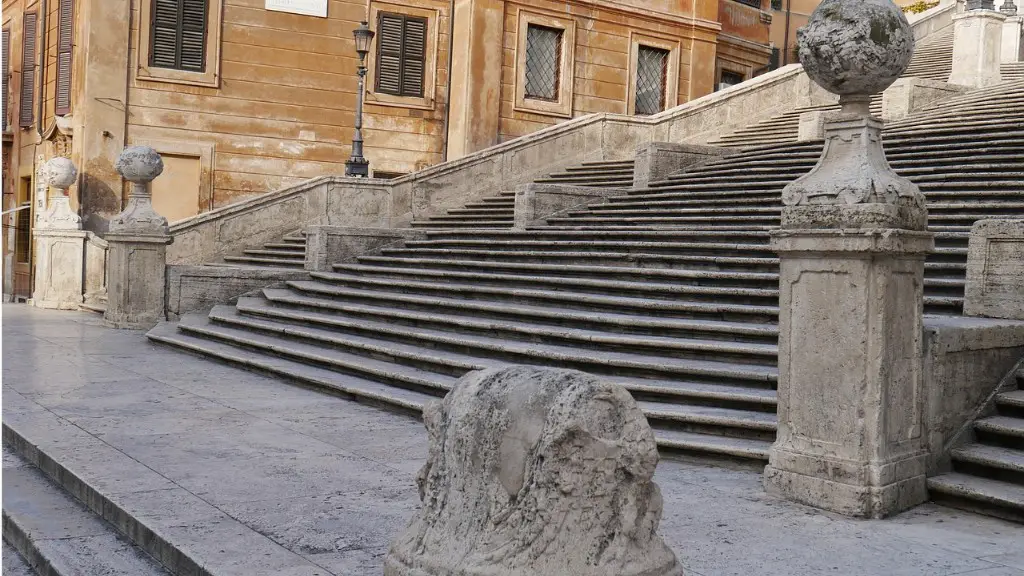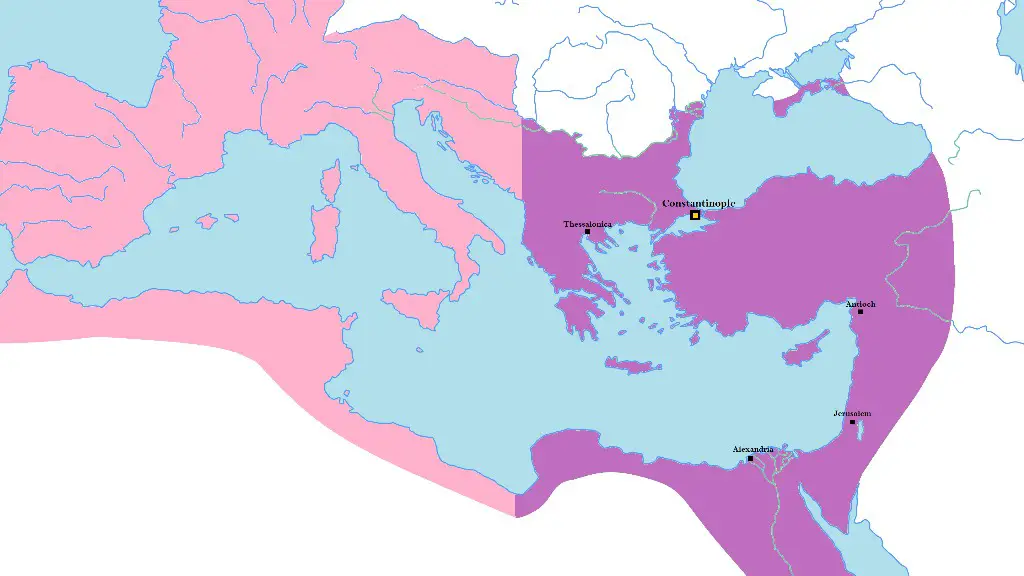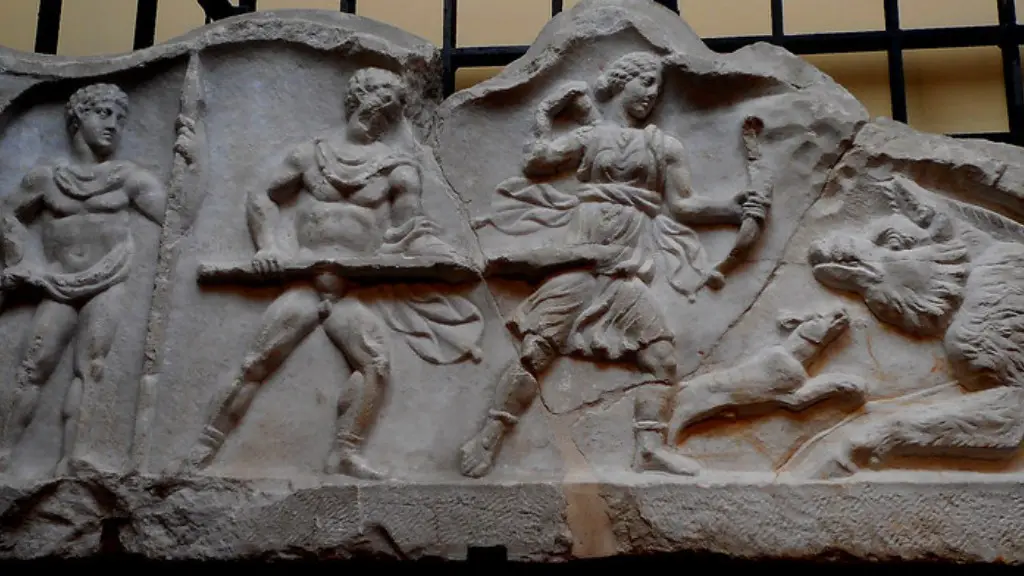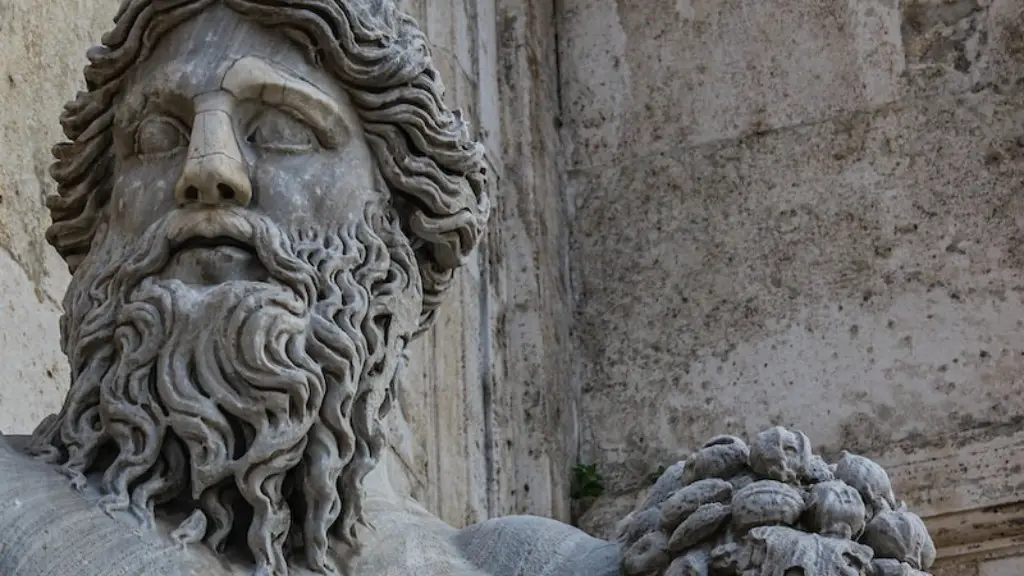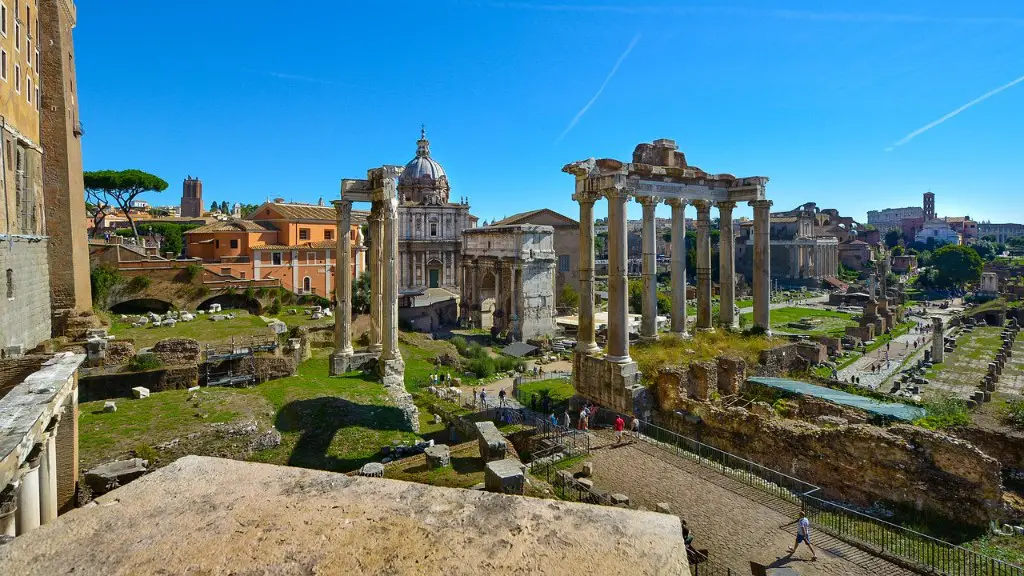Polytheism & the Mythology Behind Ancient Roman Religion
Ancient Roman religion was polytheistic, worshipping a diverse variety of gods and goddesses. The pantheon of Roman gods and goddesses featured both Roman and Greek deities, as the Romans adopted and also integrated them into their own religious system. This polytheistic system was largely based on mythical stories, which were passed down orally before evolving over a period of centuries.
The oldest and most classical account of mythology comes to us via the Roman poet, Virgil, in his epic The Aeneid. Virgil weaves a compelling narrative of gods and heroes in which the gods both help and hinder the mortals they interact with. This religious system views gods and mortals as intertwined, with their fate ultimately decided by the gods, particularly Jupiter, the king of the gods and ruler of all.
The most important ancient Roman ritual was sacrificing to the gods and goddesses. Elite households often had shrines and altars to the gods that were used for these sacrifices. Offerings for these sacrifices included incense, food, animals, and wine. It was believed that these offerings appeased the deities and strengthened their bond with mortals. It was not only the gods and goddesses who were offered sacrifice, but also their mythical counterparts, like the hero, Hercules.
The festival calendar was filled with religious observances throughout the year, often coinciding with the agricultural cycle. These religious festivals gave people the opportunity to give thanks, to honor the gods, and to ask for their protection upon again the land and its people. At each festival, some form of sacrifice was made in honor of the gods. The biggest of festivals was the Ludi Romani, held shortly after the summer solstice. This religious occasion was held to give thanks to Jupiter, Juno and Minerva.
In general, the gods were seen as sources of guidance, rather than the direct object of worship. People were more focused on practical matters, seeking protection from the gods, offering prayers for matters of health or business, and asking for insight for moral questions. This prayer for guidance was known as a ‘pax deorum’.
The gods and goddesses of Ancient Rome not only guided and protected the people, they also provided an identity. Hero tales, poems, and statues were all sources of inspiration, representing the Roman way of life. This adherence to a shared code of morality brought a sense of unity amongst the Romans and maintained a sense of purpose and meaning in their lives.
Ancestor Worship & Ancient Roman Religion
The Romans held their ancestors in very high regard, believing that the deceased lived on in the afterlife and could even help determine their fate from beyond. This belief was so deeply ingrained in Roman culture that ancestor worship played a central role in Ancient Roman religion. On the Ides of February, the Roman family would gather together at the family altar to honor their ancestors and ask for their blessings. On this day, the man of the house would sacrifice a lamb and offer fruit as a sacrifice to their forebears.
In a wider social context, the state temples of Rome were dedicated to both their gods and their ancestors. The Vestal Virgins were the custodians of these sacred sites, ensuring the proper offerings were given to the gods and the proper rituals were performed. This role of the Vestal Virgins was of vital importance to the Ancient Romans, as it was believed that a temple’s dedication to the gods and ancestors were central to the security of the Roman Republic.
Ancestor worship was also a form of divination in Ancient Roman religion. When a crisis or difficult situation presented itself, often, the ancestors were asked to provide a sign or an answer. These signs could come in the form of birds, sudden storms, or mysterious noises. In some cases, these signs were interpreted as warnings, indicating that the family or the state was about to face some kind of disaster.
It was believed that the spirits of the deceased had the power to protect their families, even in the afterlife. As such, it was imperative that the living respected and venerated the dead. On particular occasions or festivals, families would gather and offer sacrifices to their ancestors and ask for their assistance. This practice not only gave comfort to the living, but also strengthened their bonds with those who had gone before them.
Oracles & Ancient Roman Religion
Oracle sites were believed to be places of power in Ancient Roman religion. These sites were viewed as entryways to the spirit world, and were often visited by the people of Rome in search of answers and guidance. One of the most famous Oracle sites was the temple of Apollo in Delphi, which was thought to be the dwelling place of the god Apollo and the home of the Oracle of Delphi.
The Oracle was consulted in times of difficulty, where the person seeking the oracle’s help would pose a question with a yes or no answer. The Oracle would then interpret the answers and provide advice to the person seeking help. Answers given by the Oracle were believed to be divinely inspired, with the Oracle serving as an intermediary between the gods and mortals.
The Oracle was consulted for advice on a wide range of matters, from strategies in war to choices of marriage or investment. However, the Oracle’s counsel was not always readily accepted, as people were often reluctant to change their minds based on the Oracle’s advice. In these cases, the Oracle would tell them to think it over and speak to their friends and family before making a decision.
The power of the Oracle was so revered that the Roman Senate declared decrees offering protection to those who endured the journey to Delphi, as well as indemnity to those who sought advice from the Oracle. In a very real way, the Oracle was seen as a symbol of Rome’s power and influence, and was vital to the security of the state.
Augury & Ancient Roman Religion
Augury was an important part of ancient Roman religion and was used to determine the future or gain insight into a situation. This practice was done by “reading” the actions and behaviors of birds, or by looking to the gods for omens. Augurs, or professional diviners, were consulted to interpret these omens and give advice.
Most common forms of augury involved watching and interpreting birds’ behaviors and calls. The Augurs kept careful records of these observations, noting the timing and location of any omen sightings. They then discussed the omen and what it meant in terms of the specific issue at hand.
In the most extreme cases, augury was used to determine whether a certain course of action was acceptable to the gods or not. In this way, the gods could be asked for their blessing upon a decision and their will could be discerned from the omens. This practice was taken very seriously by the Roman people, who believed the gods would bestow their favor on those who heeded their advice.
In essence, Augury was a form of dialogue in which the gods and humans could communicate and interact. Through it, the gods provided guidance, helping to shape the will of the Roman people and informing their decisions.
Roman Religion & the Afterlife
In Ancient Roman religion, the afterlife was a place of both reward and punishment. Those who had honored the gods and led moral, upstanding lives were rewarded with a place in the Elysian Fields, while those who had committed crimes or were wicked were sentenced to an eternity in the depths of Tartarus. There was also the underworld, which was the place where all souls, both good and bad, found repose in the afterlife.
The afterlife was viewed as a place of continuity, as the spirits of the deceased had the ability to influence the fate of the living from beyond. People sought to honor the memory of the dead, offering them gifts and sacrifices to show their respect and gratitude for their place in the family.
Those who had passed on were thought to remain close and connected to their families, often appearing in their dreams to give advice or guidance. This was especially true on special occasions, such as birthdays or marriages, when the spirits of the dead were thought to return to the living and provide them with protection or assistance.
In Ancient Roman religion, the power of the spirit world was never to be underestimated. They were believed to have real influence over the lives of the living, and their memories, both good and bad, were always honored and respected.
Roman Religion & Art
Ancient Roman religion is reflected in the many works of religious art found throughout the Roman Empire. The most famous of these are the sculptures of the gods and goddesses, which depicted them as powerful, mysterious figures with remarkable facial features. These sculptures served to remind people of the gods and their mighty power, and were placed in public spaces like temples, forums, and gardens.
Roman temples were particularly noteworthy for their ornate decorations, which often included sculptures of gods and goddesses or heroic figures from their mythology. These sculptures were used to honor these deities, demonstrating the power and importance of the gods within Roman society.
In addition to sculptures, painting was another popular form of artwork dedicated to the gods. Religious paintings were often made as murals on the walls of temples and other religious sites. These murals typically depicted scenes from divine mythology or featured images of gods engaging in some form of godly activity.
In Ancient Roman religion, art was an important medium for honoring their gods and goddesses. Not only did it allow people to venerate the gods, it also provided them with a way of connecting with their divine origins and understanding the mysteries of the gods.
Roman Religion & the Influence of Christianity
Ancient Roman religion experienced a period of transformation in the late 4th century when the Roman Emperor Constantine converted to Christianity. Christianity was a major force in the Roman Empire from its early days, but it was only after Constantine’s conversion that it truly began to flourish.
Under Constantine, the Christian faith was openly practiced, and its followers even became favored citizens. This marked a major shift in religion, as Christianity and its followers gained power and influence within the Empire. Christianity began to supplant many of the traditional gods and goddesses, though various aspects of the Greco-Roman pantheon were still visible.
As Christianity spread, it gained favor among the people and began to actively replace traditional beliefs. This posed a significant challenge to the old religion, and many people converted to Christianity in an attempt to find salvation and eternal life. Churches began to replace pagan temples, and practices such as augury were replaced by Christian observances.
Christianity and its related practices had a major impact on ancient Roman religion. Though some aspects of the old religion remained, such as ancestor worship, Christianity managed to become the dominant force in the Roman world.
